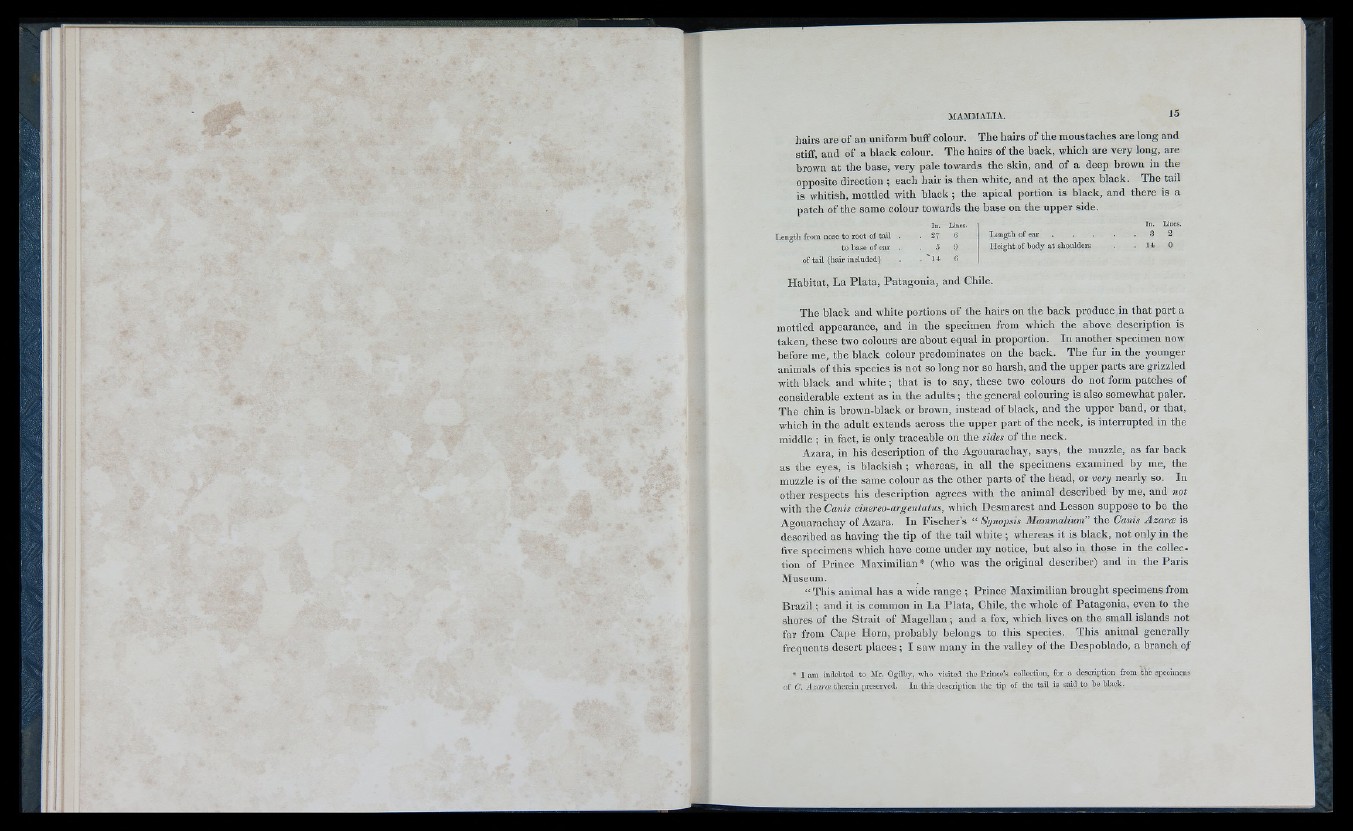
hairs are of an uniform buff colour. The hairs of the moustaches are long and
stiff, and of a black colour. The hairs of the back, which are very long, are
brown at the base, very pale towards the skin, and of a deep brown in the
opposite direction ; each hair is then white, and at the apex black. The tad
is whitish, mottled with black ; the apical portion is black, and there is a
patch of the same colour towards the base on the upper side.
li from nose to root of tail
to base of ear
of tail (hair included)
Lines.
6
9
G
Length of ear .
Height of body at shoulders
2
0
Habitat, La Plata, Patagonia, and Chile.
The black and white portions of the hairs on the back produce in that part a
mottled appearance, and in the specimen from which the above description is
taken, these two colours are about equal in proportion. In another specimen now
before me, the black colour predominates on the back. The fur in the younger
animals of this species is not so long nor so harsh, and the upper parts are grizzled
with black and white ; that is to say, these two colours do not form patches of
considerable extent as in the adults ; the general colouring is also somewhat paler.
The chin is brown-hlack or brown, instead of black, and the upper band, or that,
which in the adult extends across the upper part of the neck, is interrupted in the
middle ; in fact, is only traceable on the sides of the neck.
Azara, in his description of the Agouarachay, says, the muzzle, as far back
as the eyes, is blackish ; whereas, in all the specimens examined by me, the
muzzle is of the same colour as the other parts of the head, or very nearly so. In
other respects his description agrees with the animal described by me, and not
with the Canis cimreo-argentatus, wliich Desinarest and Lesson suppose to be the
Agouarachay of Azara. In Fischer’s “ Synopsis Mammalium" the Canis Azaræ is
described as having the tip of the tail white ; whereas it is black, not only in the
five specimens which have come under my notice, hut also in those in the collection
of Prince Maximilian * (who was the original describer) and in the Paris
Museum.
“ This animal has a wide range ; Prince Maximilian brought specimens from
Brazil ; and it is common in La Plata, Chile, the whole of Patagonia, even to the
shores of the Strait of Magellan ; and a fox, which lives on the small islands not
far from Cape Horn, probably belongs to this species. This animal generally
frequents desert places ; I saw many in the valley of the Despoblado, a branch of
• I am indobtcd to Mr. Ogilby, who Tiaitod tho Prlnco's collection, for n description from tlib specimens
of C. A za ræ therein preserved. In this description the tip of the tail is said to be biack.